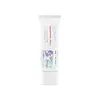E NATURE Hyal-Solution Waterful Sun Cream SPF50+ PA++++ Versus Melano CC Intensive Anti-Spot Essence
What's inside
What's inside
 Key Ingredients
Key Ingredients

 Benefits
Benefits

 Concerns
Concerns

 Ingredients Side-by-side
Ingredients Side-by-side

Water
Skin ConditioningEthylhexyl Methoxycinnamate
UV AbsorberButylene Glycol
HumectantEthylhexyl Salicylate
UV AbsorberDicaprylyl Carbonate
EmollientTitanium Dioxide
Cosmetic ColorantGlycerin
HumectantNiacinamide
SmoothingBis-Ethylhexyloxyphenol Methoxyphenyl Triazine
Skin ConditioningDiethylamino Hydroxybenzoyl Hexyl Benzoate
UV FilterCyclohexasiloxane
EmollientDimethicone
EmollientPolymethyl Methacrylate
Glyceryl Stearate
EmollientPolysorbate 60
EmulsifyingStearic Acid
CleansingArachidyl Alcohol
EmollientEthyl Hexanediol
SolventDimethicone/Vinyl Dimethicone Crosspolymer
Skin ConditioningPEG-100 Stearate
Potassium Cetyl Phosphate
EmulsifyingBehenyl Alcohol
EmollientAluminum Hydroxide
EmollientParfum
MaskingArachidyl Glucoside
EmulsifyingGlyceryl Caprylate
EmollientAmmonium Acryloyldimethyltaurate/Vp Copolymer
Xanthan Gum
EmulsifyingHamamelis Virginiana Water
AstringentNelumbium Speciosum Flower Extract
Skin ConditioningArginine
MaskingCarbomer
Emulsion StabilisingAdenosine
Skin ConditioningDipotassium Glycyrrhizate
HumectantDisodium EDTA
Tocopheryl Acetate
AntioxidantSodium Hyaluronate
Humectant1,2-Hexanediol
Skin ConditioningCentella Asiatica Extract
CleansingPolygonum Cuspidatum Root Extract
AntioxidantScutellaria Baicalensis Root Extract
AstringentHydrogenated Lecithin
EmulsifyingHydrolyzed Hyaluronic Acid
Humectant7-Dehydrocholesteryl Palmitate
Skin ProtectingCamellia Sinensis Leaf Extract
AntimicrobialGlycyrrhiza Glabra Root Extract
BleachingChamomilla Recutita Flower Extract
MaskingRosmarinus Officinalis Leaf Extract
AntimicrobialCeramide NP
Skin ConditioningSodium Acetylated Hyaluronate
HumectantWater, Ethylhexyl Methoxycinnamate, Butylene Glycol, Ethylhexyl Salicylate, Dicaprylyl Carbonate, Titanium Dioxide, Glycerin, Niacinamide, Bis-Ethylhexyloxyphenol Methoxyphenyl Triazine, Diethylamino Hydroxybenzoyl Hexyl Benzoate, Cyclohexasiloxane, Dimethicone, Polymethyl Methacrylate, Glyceryl Stearate, Polysorbate 60, Stearic Acid, Arachidyl Alcohol, Ethyl Hexanediol, Dimethicone/Vinyl Dimethicone Crosspolymer, PEG-100 Stearate, Potassium Cetyl Phosphate, Behenyl Alcohol, Aluminum Hydroxide, Parfum, Arachidyl Glucoside, Glyceryl Caprylate, Ammonium Acryloyldimethyltaurate/Vp Copolymer, Xanthan Gum, Hamamelis Virginiana Water, Nelumbium Speciosum Flower Extract, Arginine, Carbomer, Adenosine, Dipotassium Glycyrrhizate, Disodium EDTA, Tocopheryl Acetate, Sodium Hyaluronate, 1,2-Hexanediol, Centella Asiatica Extract, Polygonum Cuspidatum Root Extract, Scutellaria Baicalensis Root Extract, Hydrogenated Lecithin, Hydrolyzed Hyaluronic Acid, 7-Dehydrocholesteryl Palmitate, Camellia Sinensis Leaf Extract, Glycyrrhiza Glabra Root Extract, Chamomilla Recutita Flower Extract, Rosmarinus Officinalis Leaf Extract, Ceramide NP, Sodium Acetylated Hyaluronate
 Reviews
Reviews

Ingredients Explained
These ingredients are found in both products.
Ingredients higher up in an ingredient list are typically present in a larger amount.
Butylene Glycol (or BG) is used within cosmetic products for a few different reasons:
Overall, Butylene Glycol is a safe and well-rounded ingredient that works well with other ingredients.
Though this ingredient works well with most skin types, some people with sensitive skin may experience a reaction such as allergic rashes, closed comedones, or itchiness.
Learn more about Butylene GlycolDipotassium Glycyrrhizate comes from licorice root.
Extracts of licorice have demonstrated to have antibacterial, anti‐inflammatory, antiviral, antioxidant properties.
One component, glabridin, has extra potent antioxidant and soothing properties. It has also been found to block pigmentation from UVB rays in guinea pigs.
Licorice Root also contains a flavonoid. Flavonoids are a natural substance from in plants. Flavonoids also have antioxidant properties.
Another component, glycyrrhizin, has been found to have anti-inflammatory and antimicrobial benefits. This may make licorice root extract effective at treating acne. However, more research is needed to support this.
Liquiritin is one of the flavone compounds found in licorice. It has been found to help lighten skin by preventing tyrosinase from reacting with tyrosine. When the two react, protein is converted to melanin. Melanin is the substance in your body that gives your features pigmentation.
Licorice root is native to Southern Europe and Asia. It has been used in traditional Chinese medicine to help with respiratory issues.
Learn more about Dipotassium GlycyrrhizateDisodium EDTA plays a role in making products more stable by aiding other preservatives.
It is a chelating agent, meaning it neutralizes metal ions that may be found in a product.
Disodium EDTA is a salt of edetic acid and is found to be safe in cosmetic ingredients.
Learn more about Disodium EDTAParfum is a catch-all term for an ingredient or more that is used to give a scent to products.
Also called "fragrance", this ingredient can be a blend of hundreds of chemicals or plant oils. This means every product with "fragrance" or "parfum" in the ingredients list is a different mixture.
For instance, Habanolide is a proprietary trade name for a specific aroma chemical. When used as a fragrance ingredient in cosmetics, most aroma chemicals fall under the broad labeling category of “FRAGRANCE” or “PARFUM” according to EU and US regulations.
The term 'parfum' or 'fragrance' is not regulated in many countries. In many cases, it is up to the brand to define this term.
For instance, many brands choose to label themselves as "fragrance-free" because they are not using synthetic fragrances. However, their products may still contain ingredients such as essential oils that are considered a fragrance by INCI standards.
One example is Calendula flower extract. Calendula is an essential oil that still imparts a scent or 'fragrance'.
Depending on the blend, the ingredients in the mixture can cause allergies and sensitivities on the skin. Some ingredients that are known EU allergens include linalool and citronellol.
Parfum can also be used to mask or cover an unpleasant scent.
The bottom line is: not all fragrances/parfum/ingredients are created equally. If you are worried about fragrances, we recommend taking a closer look at an ingredient. And of course, we always recommend speaking with a professional.
Learn more about ParfumTocopheryl Acetate is AKA Vitamin E. It is an antioxidant and protects your skin from free radicals. Free radicals damage the skin by breaking down collagen.
One study found using Tocopheryl Acetate with Vitamin C decreased the number of sunburned cells.
Tocopheryl Acetate is commonly found in both skincare and dietary supplements.
Learn more about Tocopheryl AcetateWater. It's the most common cosmetic ingredient of all. You'll usually see it at the top of ingredient lists, meaning that it makes up the largest part of the product.
So why is it so popular? Water most often acts as a solvent - this means that it helps dissolve other ingredients into the formulation.
You'll also recognize water as that liquid we all need to stay alive. If you see this, drink a glass of water. Stay hydrated!
Learn more about Water